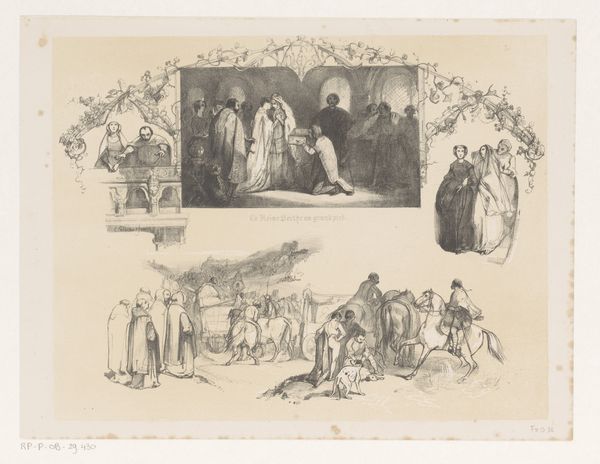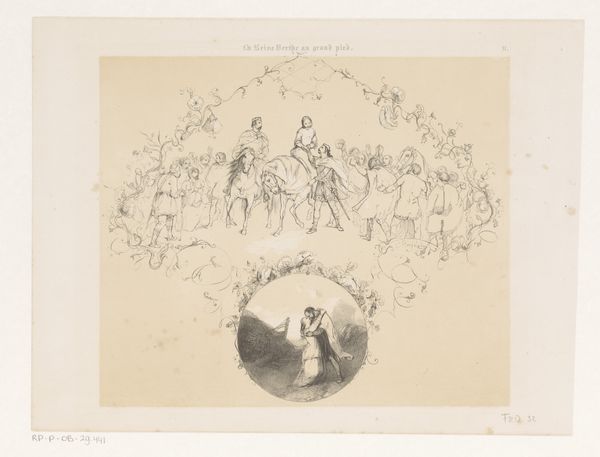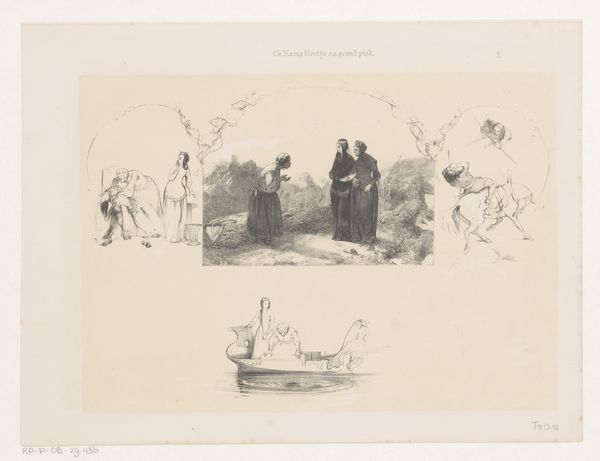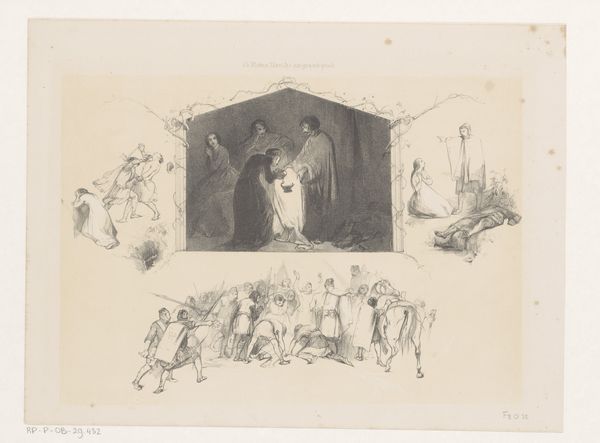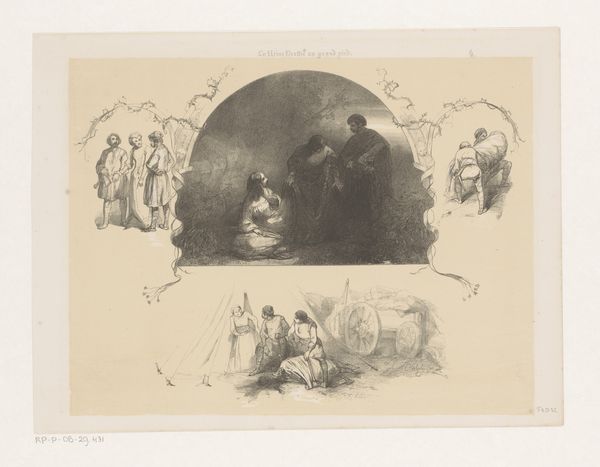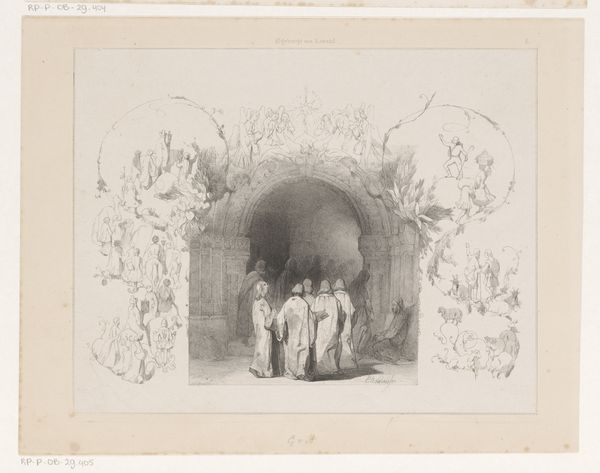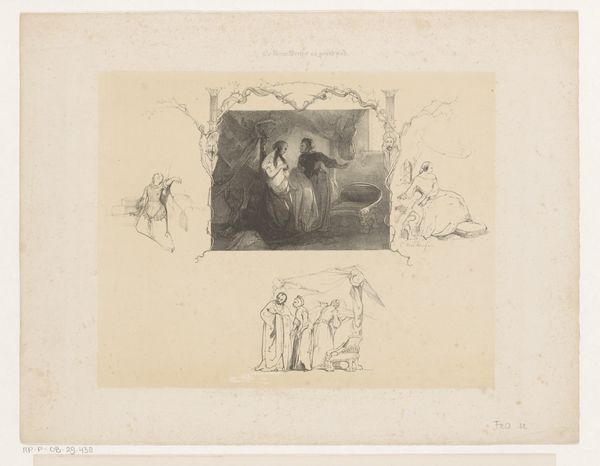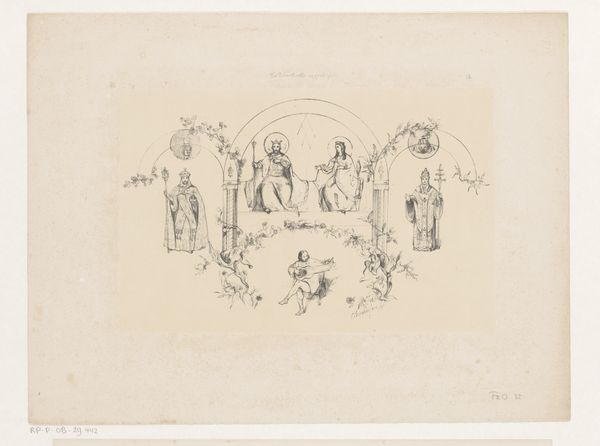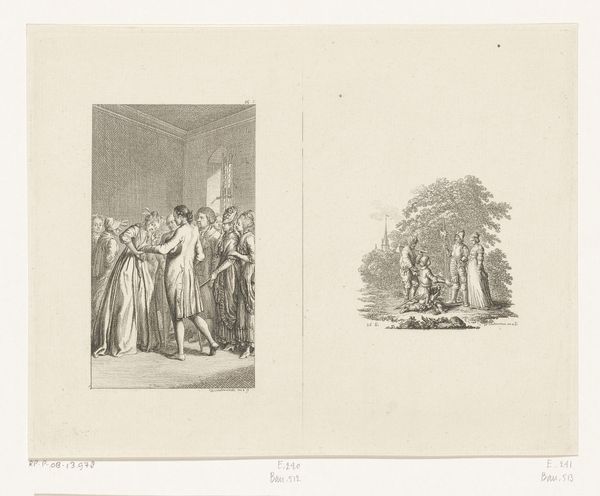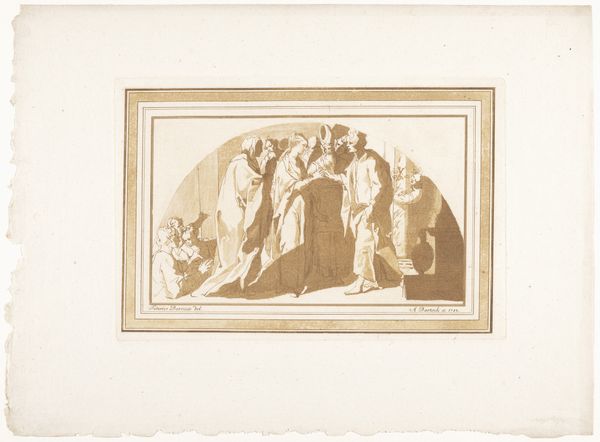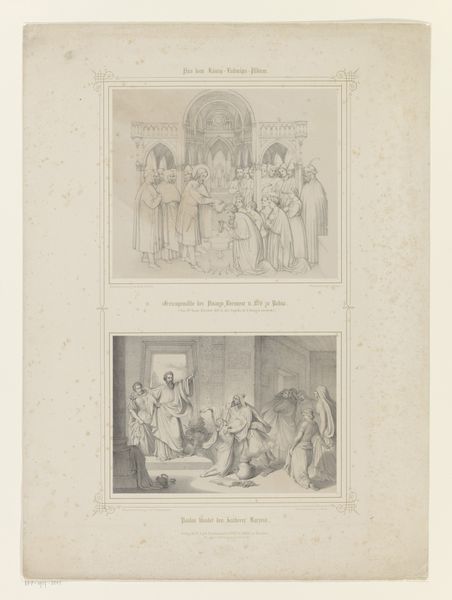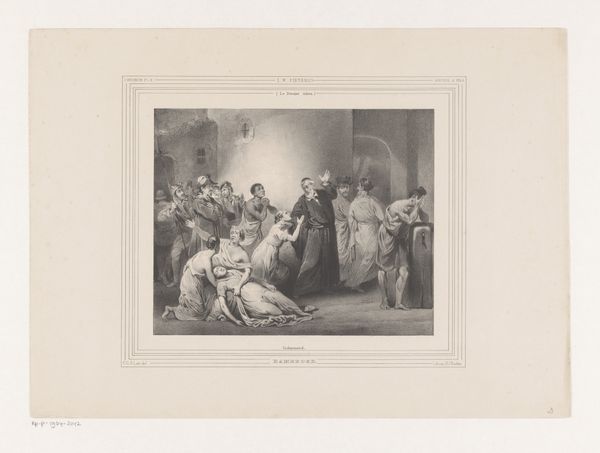
drawing, print, paper, ink, graphite
#
drawing
#
narrative-art
# print
#
figuration
#
paper
#
ink
#
graphite
#
watercolour illustration
#
history-painting
#
academic-art
Dimensions: height 253 mm, width 334 mm
Copyright: Rijks Museum: Open Domain
Curator: Here we have "Man kust koningin op het voorhoofd", which translates to "Man kisses queen on the forehead," a drawing in graphite, ink, and watercolor on paper, made before 1842 by Charles Rochussen. It's part of the Rijksmuseum collection. Editor: My first impression is one of muted formality; the palette is almost entirely monochromatic, creating a solemn atmosphere. The composition is quite interesting too, dividing our attention between the primary scene above and the secondary one below. Curator: Absolutely. The artist masterfully evokes a sense of ceremony. Consider the weight a kiss, particularly on the forehead, carried during this period. It suggests not romantic love, but respect, deference, perhaps even a divine blessing. This action underscores the queen’s sanctified position within the social hierarchy. Editor: Notice how the light seems to emanate from the queen in the upper scene. The artist really highlights her. And, despite the sketch-like quality of the figures in the crowd, there's a clear emphasis on their postures and gestures of reverence. It's well balanced despite the apparent simplicity. Curator: I agree. And look at the subtle but deliberate positioning of the second scene, below, suggesting continuity, the passing of the royal mantle through generations. It almost serves as a narrative anchor, grounding the main scene within a broader historical and symbolic context. Editor: It makes the viewer really consider each vignette's composition separately. What I find especially engaging is how Rochussen used very basic materials, graphite and ink, and still creates this impression of depth and nuanced tonality. He transforms them into powerful storytelling tools. Curator: Indeed. The visual weight afforded by his mark-making makes you wonder what narrative events took place surrounding such an intimate display. Its ambiguity invites one to participate, and fill in the implied story for themselves. Editor: This piece demonstrates the remarkable ways that relatively modest artistic gestures, choices of light and shadow, placement and line can contribute toward an object's sense of purpose, creating an emotional experience in the process. Curator: Very well said. Its symbolic economy, alongside careful design creates the conditions where our interpretation of its underlying meaning can flourish, despite temporal and cultural distances.
Comments
No comments
Be the first to comment and join the conversation on the ultimate creative platform.

